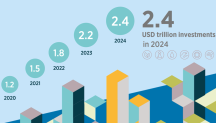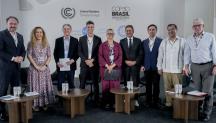

-
-
IRENA (2022), Net-Zero Pathways for Cities: The Case Study of Wuzhong District, Suzhou, China, International Renewable Energy Agency, Abu Dhabi.
Copied
/-/media/Files/IRENA/Agency/Publication/2022/Mar/IRENA_Net-Zero_Pathways_Wuzhong_2022.pdf
Copied
Net-Zero Pathways for Cities: The Case Study of Wuzhong District, Suzhou, China
Newsletter
In 2020, Chinese President Xi Jinping announced, at the 75th United Nations General Assembly, that China will aim to peak carbon dioxide (CO2) emissions before 2030 and achieve carbon neutrality by 2060. Given that cities consume 85% of the total national energy supply in China and are responsible for around 70% of total national energy-related CO2 emissions, they will take this as guidance and make corresponding strategies and actions plans to contribute to achieving the announced national goals. How can local decision makers in those cities where the potential for renewable energy production is less abundant support the achievement of the national climate objectives while sustaining local economic and social development? The actions they take and the decisions they make should be based on their available resources.
This IRENA report used the Wuzhong District of Suzhou city as a case study for Chinese cities to explore pathways towards achieving a net-zero emissions future in a collective and collaborative fashion. The modeling results show how Wuzhong’s energy system might evolve if the technological options and decarbonisation strategies are, to a large extent, confined to conventional technological pathways. The modelling exercise helps local decision makers understand the limitations of the business-as-usual approach and why transformative measures might be needed.
More importantly, the report discusses the strategic areas enabling expansion of the decarbonisation options presented in the modelling results: building-integrated PV, demand-side flexibility, green hydrogen and urban energy planning. These solutions are applicable not only for Wuzhong but in general for many districts and cities like Wuzhong with moderate local renewable energy resources and relatively high energy demand. Certainly, these strategic areas do not constitute an exhaustive list, but they do highlight the most relevant aspects that such cities or districts should look into and adjust to suit the characteristics of their localities.
This report forms part of the Energy Solutions for Cities of the Future project, which is supported by the International Climate Initiative (IKI). The German Federal Ministry for the Environment, Nature Conservation and Nuclear Safety (BMU) supports this initiative based on a decision adopted by the German Bundestag.




